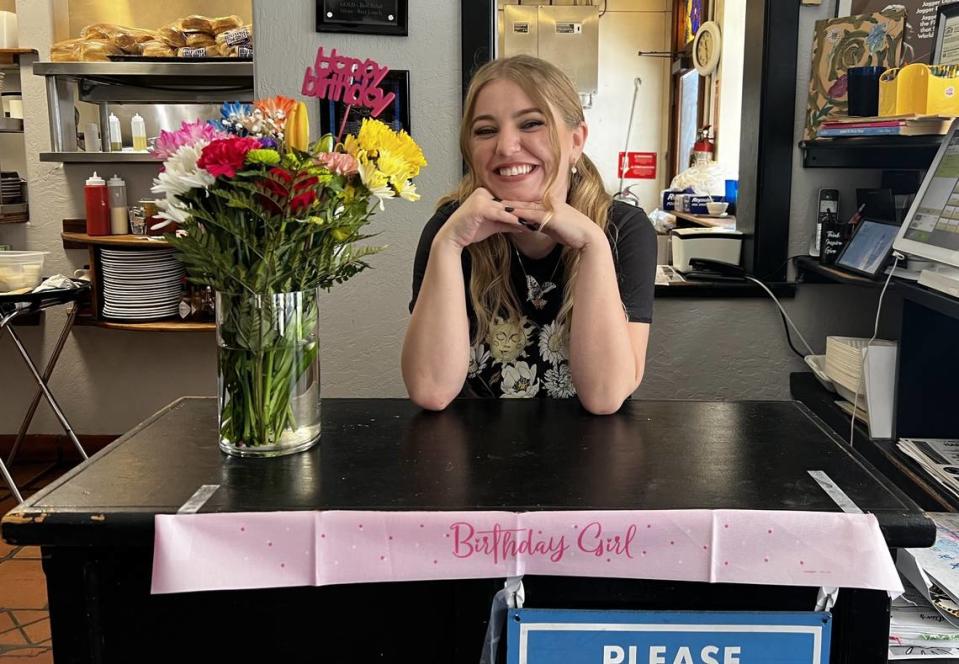Are Prop. 47, other laws to blame for fentanyl crisis? Here’s what Stanislaus officials say
Modesto police Officer Mark Ulrich first noticed fentanyl during an arrest in 2019. He’d been used to finding heroin and identifying it by its tarry viscosity and strong vinegar smell. But this substance was different.
“I did what we always did, took a little whiff, and boom. I got immediately dizzy and was like, ‘Whoa, whoa, whoa, OK, that’s weird. What the heck is that?’” Ulrich said. “Well, what they were doing at the time was they were mixing fentanyl into the heroin. So you couldn’t tell the difference.”
He can tell the difference now. That training has become crucial as fentanyl overdoses and poisoning have reached crisis level.
After President Joe Biden and Chinese President Xi Jinping met in the Bay Area this month to discuss a variety of issues, fentanyl was the first one brought up by Biden in his news conference afterward.
He remarked that China “took action to greatly reduce the amount of fentanyl” shipped into the United States in 2019 and that the nations’ joint focus now is to target the chemical ingredients that go into making the drug and prevent pill presses from entering the U.S.
The Biden-Xi meeting in San Mateo County was held ahead of the Asia-Pacific Economic Cooperation summit at the Moscone Center in downtown San Francisco. It’s just under a mile away from the Tenderloin District, which the Stanislaus County District Attorney’s Office said has been a major distribution hub for fentanyl sold here in the Valley.
Stanislaus dealers buying “fentanyl by the pound” in San Francisco
“You had a bunch of cartels essentially set up shop in San Francisco and the dealers in our county would drive to the Tenderloin, they would buy fentanyl by the pound and then they would drive it back here to sell,” Deputy District Attorney Patrick Hogan said in an interview with The Bee. “That’s because it was just so easy.”
Hogan said this information was provided to him during a debriefing of a drug dealer a few years ago when “color fentanyl” — fentanyl pills in colors other than white — first arrived on the market. Hogan said his source could double his money with a day trip into the Tenderloin. He also referenced other San Francisco Bay Area cities as easy places to pick up supply and drive it back into the county.
Biden said in his news conference that more U.S. residents ages 18 to 49 die from fentanyl than from guns, car accidents, or any other cause.
In Stanislaus County, there were 129 overdose deaths this year as of October. More than 60% of those deaths were due to illegal fentanyl. Bee reporting in late October said the county Coroner’s Office had recorded 81 fentanyl-related deaths since New Year’s Day, 34 of them since July.
County officials expect the death toll to rise above 200 by the end of the year, surpassing last year’s total of 176.
What’s fentanyl’s effect at the street level?
As Ulrich noted, police officers now are trained to recognize fentanyl and handle the drug with care. For instance, heroin mixed with fentanyl has a “glassy” sheen to it. But Ulrich said he hasn’t seen heroin at all recently, even heroin mixed with fentanyl. It’s now just fentanyl in a white powder form, which is easily identifiable, he said.
For the end user, that might not always be the case. Both Ulrich and Hogan confirmed they’ve seen cases where fentanyl is being mixed into cocaine, meth and other drugs. A drug user might not always be seeking out fentanyl but can die from it regardless.
Fentanyl is getting cheaper, too. Hogan said the street value now sits around $40 a gram and about $500 for an ounce. It can be cut into a more expensive drug such as cocaine to increase a dealer’s profit margin.
Law enforcement officials and prosecutors including Hogan point to California’s laws as the reason the crisis has escalated. Ulrich and Hogan complained about Proposition 47 and believes it’s the reason drug dealers are being rotated out of the system and back onto the streets and why the fentanyl crisis has become so bad.
What is Proposition 47?
Proposition 47 was passed in 2014 in an effort to reduce prison populations in California. It made some nonviolent crimes, such as drug possession, misdemeanors and made other nonviolent crimes subject to resentencing or restructuring. Changes to violent and serious crimes were unaffected, according to the California Judicial Council’s Criminal Justice Services.
It aimed to use the taxpayer funds saved from not jailing and imprisoning those convicted of the nonviolent crimes to instead pay for community programs like ones for at-risk K-12 students. $68 million in savings for the 2016-17 fiscal year were reallocated to drug and alcohol rehabilitation, mental health treatment and truancy prevention programs, according to its website.
But Hogan said that the domino effect Proposition 47 had on legislation wasn’t worth it and that prosecutors can’t send drug dealers to state prison like they once could. Instead, they can only be held in county jail for a maximum of four years or as little as one year.
“To be honest with you, my big frustration is trying to tell people that the sentencing structure for fentanyl sales is frankly inappropriate, given the gravity of the crisis,” said Hogan.
Hogan believes this because, hypothetically, if someone were convicted of possessing two pounds of fentanyl intended for sale, he can send them only to a local jail unless they have a prior strike on their record.
Ulrich said that usually means a dealer would spend four years or less in jail, be released downtown and could potentially start the process over again. “I think people were lied to, they kind of (had) the wool pulled over their eyes when they were told about voting for it,” he said.
Both Ulrich and Hogan acknowledged that other systemic issues are worsening both the fentanyl and homeless crises, including lack of affordable or free rehab services, lack of affordable housing and lack of harm-reduction efforts for users. A simple definition of harm reduction, from the Johns Hopkins School of Public Health, is “reducing the harm associated with using drugs through a variety of public health interventions.”
“I’m not the guy who’s sitting here saying that there’s no place for harm reduction. I don’t believe that. Harm reduction is really important,” Hogan said. “But harm reduction is not going to be the way out of this, either. We need all the tools in our arsenal to be able to handle it. That includes appropriately punishing the people that are responsible on the dealing end.”
As a prosecutor, Hogan said he doesn’t want to create a “punishment regime” that oppresses, but rather wants the tools to prosecute appropriately, especially when trying to charge a dealer with murder who’s customer had died.
Can a dealer be charged with murder for a fentanyl death?
Homicide cases based on fentanyl overdoses or poisonings are tough to prosecute, Hogan said. A direct link between the dealer’s supply and the drugs found on a dead user has to be established.
This can get complicated, Hogan said. Sometimes users have drugs on them from different dealers or have no phone record to prove they got the lethal dose from a specific person.
There have been two cases where the Stanislaus DA’s Office charged men — Anthony Taft Lee and George Foster Keene —with murder because they allegedly supplied fentanyl to someone who died from an overdose.

Lee, 36, was charged with murder after allegedly supplying a lethal dose of fentanyl to 21-year-old Connor Hoffman in 2021. Lee’s case was the first time in Stanislaus County that prosecutors charged an accused fentanyl dealer with murder.
This was because investigators had text messages they felt proved that Hoffman bought fentanyl from Lee about an hour and a half before his death. Prosecutors alleged they knew Hoffman didn’t have any other fentanyl on him because he had just gotten out of rehab.
“They were the only family that we had ever been able to meet with where we could tell them, ‘We know who the dealer was responsible for your son’s death,’” said Hogan. “And we did what we could to prosecute to the best of our ability.”
Hogan said the case became complicated because the public sentiment, particularly on social media, was questioning whether it was right to prosecute someone for a user’s death who asked specifically for fentanyl from their dealer. He cited a “tort,” or an argument, called “assumption of risk.” Hogan said this tort doesn’t exist in criminal law, but that people could “consciously or unconsciously apply it anyway,” making a jury trial more difficult.
Lee took a plea deal for a lesser charge of manslaughter.

In Keene’s case, he is accused of supplying the fentanyl responsible for the Aug. 17 death of 24-year-old Ceres resident Bethany Borges. Details of the incident have not been released.
Hogan said Keene’s case is a prosecution he “very much believes in.” The defendant’s next court appearance is Dec. 11.
“For every every 50 cases like this that we look into, we will be lucky to find one where we really can prosecute, and it’s not because people aren’t trying, it’s just because of how difficult it is to create that direct line between the dealer and the death,” said Hogan. “It’s super, super tough.”

